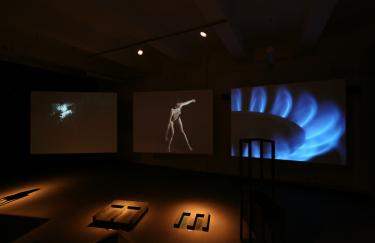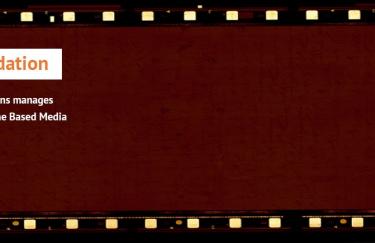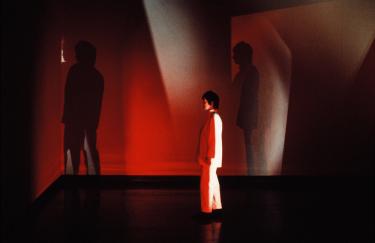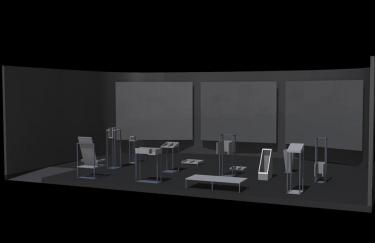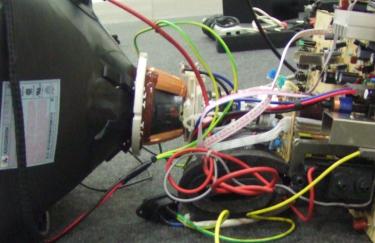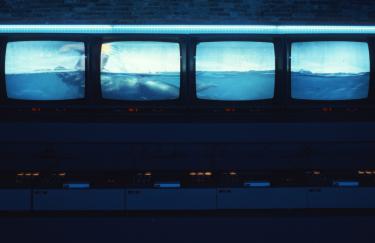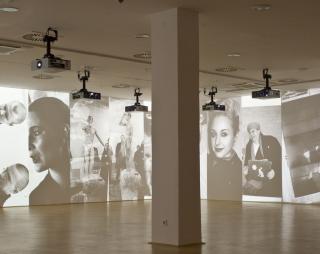
Case Study 4: Katharina Sieverding, Testcuts I
as part of Quadriennale 2010 for the exhibition Projected Data Images. Testcuts
Typ
Case studyDate
13.10.2010In the exhibition space, eight projectors cast montages of black-and-white photographs on the surrounding three walls, resulting in a full-height, continuous frieze of eight lined-up projections of images. Every single one of the eight montages is composed of three side-by-side, vertically oriented strips of equal size, based on so-called teststrips. Byproducts of the analog process of enlarging photographs, for Testcuts I Katharina Sieverding used her private archive of photographs collected over forty years and selected of 1,740 archival photographs in order to combine theme in constellations of three in 580 photomontages.
The same file with 580 single photomontages is stores on each of the eight projectors. It shows one photomontage for fifteen seconds and then switches to the next one. The sequence of the projections is sorted chronologically on only one projector. All of the other seven projections are controlled by a random program. For that reason, it can be called an eight-channel installation because despite the same visual material an individual playback via the projector results.
The installation runs without sound and can present very different variations; precisely 5,808 variations can result on the projection frieze. Viewers can move around in the room and freely choose their position.
A work of art such as Testcuts I consists not just of the digital data for projecting the images but in equal measure of components of the installation such as the qualities of the space and the technical equipment. Testcuts I represents an increasingly common case for a work of art whose visual elements can be conveyed with a minimum of material substance—here in the form of the required digital image files—but whose presentation is a technologically complex, space-related system.
From the outset it was agreed that the installation Testcuts I would initially be realized in a three-dimensional, physically experienceable form only for the duration of the exhibition at IMAI. All that remained with then exhibition ended was the material basis of the work: the relevant image files. On that occasion, a documentation was made of while Testcuts I was on exhibition in which the special requirements of digital storage and presentation technology that exists only for a short time were to be taken into account. It was based on the hypothetical case of the work being acquired by a museum collection, as a consequence of which not only would the image data need to be archived for the long term but the parameters of its future presentation in different spaces would have to be defined. The long-term archiving of digital date was not the explicit focus in this case study. Primarily, it addressed the question of how the components of the installation could be handled.
When recording the first installation of the work, in addition to documenting the image files and the technical playback and presentation equipment, it was also important write a clear description of the presentation of the projections that formulated the general requirements for future presentations of the work.
When development the structure of the documentation, various documentation models published in past years were extremely helpful (e.g., the results from the research project DOCAM, Inside Installations, Matters in Media Art).
- general data to identify the work
- a list of all the information on the digital visual material of the work
- a formulation of the general requirements for presentation with an eye to future presentations of the work
- a complete documentation of all the specific details of the work’s first presentation at IMAI
- a summary of the interview with the artist
- a list of other documentation materials such as written, photographic, and cinematic documents on the work and installation drawings made especially for it.
This case study was conducted with assistance from certified restorer Anna-Maria Virgin.

